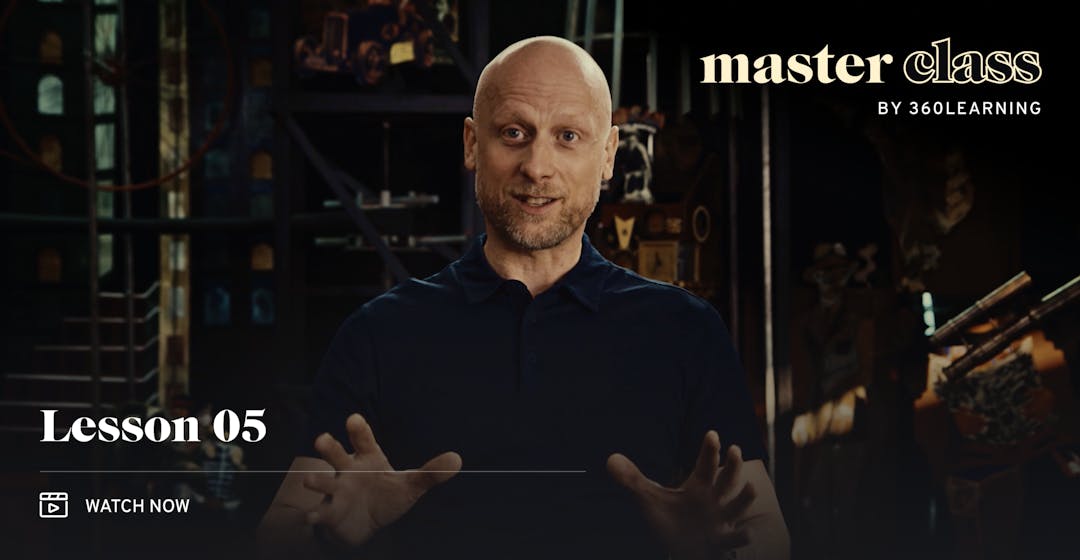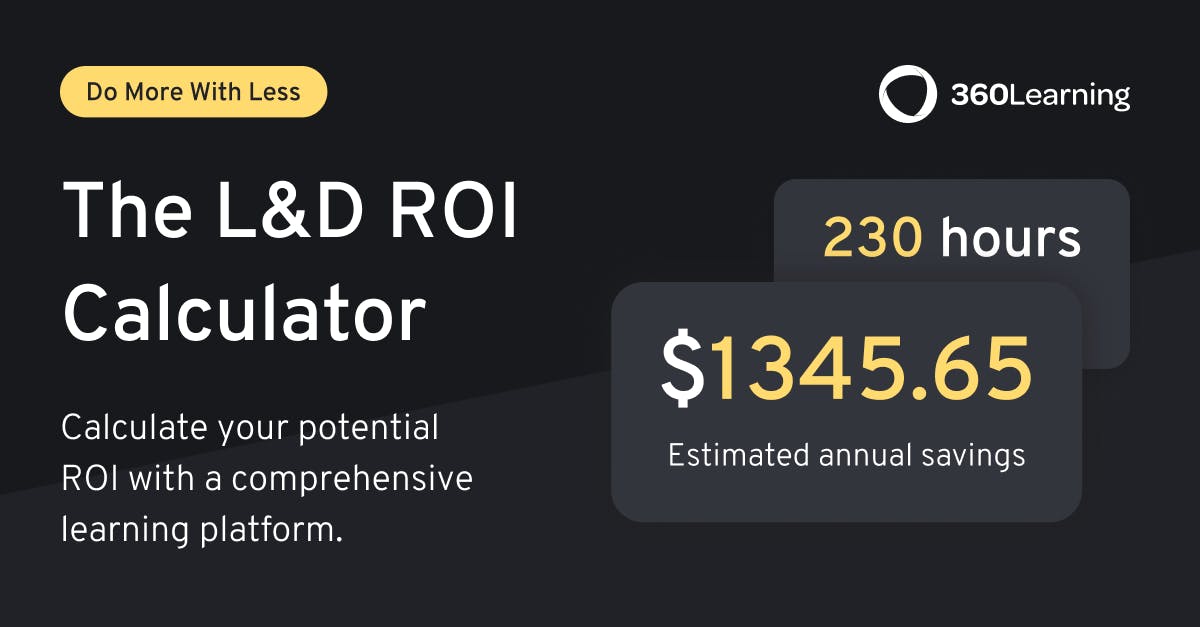
L&D Master Class Lesson 5: How to Prove Your Impact as a Strategic Business Partner
After far too long focusing on measuring learning engagement, more L&D leaders are now measuring their impact as a strategic business partner solving real problems. While this is a welcome development, it poses new challenges.
How do you gather the right data and evidence that proves you’re making a demonstrable difference? And what key metrics should be front of mind when designing and implementing your digital learning solutions?
In this fifth lesson of our L&D master class, David James discusses a four-step approach for proving your impact as a strategic business partner, including a crucial focus on employee performance. He also explains the importance of being transparent with stakeholders and showing exactly how you’re moving the needle.
Missed Episode 4 of our L&D master class? Check it out here!
How to prove your impact as a strategic business partner
*This content is provided by 360learning, an independent company, with no affiliation with the “MasterClass” brand.
1. Understand the problem first
As David explains, L&D leaders today are working hard to overcome the mentality of seeing digital learning as merely supplementary to face-to-face learning.
“Savvy L&D leaders now know that this is untrue–digital learning is far more than just a supplement for face-to-face learning,” he says. “We should expect to make a demonstrable difference with digital learning solutions, and we should know that we can.”
However, you’re probably not going to be able to prove the impact of suites of generic content, be that eLearning or resources, without proper analysis. According to David, you first have to determine what your ground zero is. Otherwise, all you have is a solution looking for a problem.
“In fact,” he explains, “there's just no way of proving the actual impact if you're seeking to affect performance and results if you're starting from a position of topic-centric programs or content.”
As David notes, proving the impact of digital learning solutions all comes back to understanding the problem to be solved. “Without understanding the problem you need to solve then you cannot possibly understand whether it's had the desired effect or not.”
Measuring whether people are clicking on the content, and whether they’re happy with it, was not enough before. And as David says, it certainly isn’t enough now–that’s why you should focus on measuring improvements to employee performance above all else.
And speaking of measuring outcomes, have you tried out our free training ROI calculator?
There's just no way of proving the actual impact if you're seeking to affect performance and results if you're starting from a position of topic-centric programs or content.
2. Focus on the only metric that matters: employee performance
As L&D leaders, we need to understand via the data and evidence whether we’re making a real difference on people’s current level of performance.
“We're seeking, with a minimum viable product, to see whether we can have a positive impact on both the data and their ability to achieve results,” David says. “Every other metric is just an indicator.”
As David explains, if people are engaging it is an indication that the content is the right stuff at the right time. If people aren’t engaging, it could be the wrong stuff or at the wrong time. “But these are just indicators,” he says, “and they can tell us whether what we've produced could possibly make an impact.”
“But the only way that we prove our true value is that they have made the impact that we determined at the outset, which is the reason that we were involved in the first place.”
So, now that we have employee performance at the top of our list, it’s time to show how we’re moving the needle.
The only way that we prove our true value is that they have made the impact that we determined at the outset, which is the reason that we were involved in the first place.
3. Show exactly how you’re moving the needle on skills
According to David, the only true indicator of whether you’ve made the impact you intended is that employees are performing with a new level of skill and capability that they weren’t able to demonstrate before.
“So, if you expect employees to be able to code, then the success of your intervention is that they are able to code to the expected and required levels.”
“Holding ourselves to account to the metrics that are meaningful and that matter to our stakeholders doesn't just mean that we understand the problem and that we've got a greater chance of actually succeeding, moving the needle, and demonstrating our impact. It also means we’re increasing the quality and impact of our learning interventions.”
Finally, as David notes, it is important to be transparent with your stakeholders and have truly open discussions about the work you’re implementing.
Holding ourselves to account to the metrics that are meaningful and that matter to our stakeholders also means we’re increasing the quality and impact of our learning interventions.
4. Be transparent and show where you’re falling short
As David acknowledges, switching from measuring engagement to measuring impact might seem hard. In fact, it may be tempting to replace the old LMS or the old suite of content with new ones and just hope for the best.
“But the problem is,” he explains, “if you stick around long enough for people to find out that this new platform still isn't going to make a difference, then it's your neck on the block, because expectations are still going to rise.”
Those expectations can come from employees who expect help with the actual work they are doing and leaders who need help to reskill their teams to perform new roles and get new people up to speed. This is even more important right now, because people are leaving or joining organizations at a greater rate than they were before.
And in such a competitive market, it makes a great impression when L&D leaders dig beyond engagement metrics to get to the heart of things. “In my experience,” says David, “stakeholders are generally impressed when a learning and development leader wants to have a conversation about the work itself and what's actually going on.”
Stay tuned for next week’s final lesson on how to make your L&D strategy future-proof. And remember, you can get all lessons delivered straight to your inbox by signing up for our weekly content newsletter below.
Stakeholders are generally impressed when a learning and development leader wants to have a conversation about the work itself and what's actually going on.
Looking for more great resources on transformative learning?
If you loved this lesson of our L&D master class, be sure to join The L&D Collective, our community of learning leaders where David hosts quarterly AMAs (Ask Me Anything) on everything related to impactful L&D.
And for more practical guidance, check out the 360Learning Resources Hub. Here, you’ll find a range of ebooks, cheat sheets, and articles on everything from onboarding to blended learning and more.
Thanks for watching!



